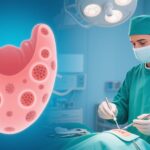Introduction
Breast health is a significant concern for many women, as the breast is a complex organ susceptible to various benign and malignant conditions. Among the most commonly discussed breast health issues are breast hyperplasia and breast nodules. Despite having overlapping characteristics, these conditions are distinct in their nature, causes, and clinical implications. Understanding the differences between these two conditions is crucial for proper management and for alleviating patient concerns.
Defining Breast Hyperplasia and Breast Nodules
Breast Hyperplasia
Breast hyperplasia refers to a benign proliferation of breast tissue resulting from hormonal imbalances, particularly involving estrogen and progesterone. This condition is not inflammatory and is non-cancerous. It often manifests in women during their reproductive years and is influenced by the hormonal fluctuations of the menstrual cycle.
Breast Nodules
Breast nodules, on the other hand, are not a specific disease but rather a descriptive term for any palpable lump or mass within the breast tissue. These can range from benign entities such as fibroadenomas and cysts to malignant tumors such as breast cancer. The nature of a nodule—whether benign or malignant—requires careful evaluation through diagnostic tools.
Symptoms
Symptoms of Breast Hyperplasia
Symptoms of breast hyperplasia are often cyclical, correlating with the menstrual cycle. Women may experience breast tenderness, swelling, or lumpiness, particularly during the premenstrual phase. These changes typically subside after menstruation.
Symptoms of Breast Nodules
Breast nodules may or may not be symptomatic. Benign nodules are often painless and discovered during routine self-exams or clinical evaluations. Malignant nodules, however, may present with symptoms such as nipple discharge, changes in breast shape, skin dimpling, or persistent pain.
Causes
Causes of Breast Hyperplasia
Breast hyperplasia is primarily driven by hormonal imbalances. Factors contributing to these imbalances include stress, dietary habits, lack of exercise, and certain medications. Genetic predispositions may also play a role.
Causes of Breast Nodules
The causes of breast nodules vary widely depending on their type. Fibroadenomas often result from hormonal sensitivity, while cysts may form due to blocked ducts. Malignant nodules arise from genetic mutations often influenced by environmental and lifestyle factors.
Diagnostic Methods
Diagnosis of Breast Hyperplasia
Diagnosis typically involves a clinical examination followed by imaging such as ultrasound or mammography to rule out malignancies. Hormonal profiling may also be conducted to understand the underlying imbalance.
Diagnosis of Breast Nodules
Breast nodules require a more extensive diagnostic approach. Imaging via ultrasound, mammography, or MRI, coupled with biopsy procedures like fine-needle aspiration or core biopsy, is necessary to determine the nodule’s nature.
Treatment
Treatment of Breast Hyperplasia
Treatment focuses on hormonal regulation and lifestyle modifications. Medications like hormone modulators may be prescribed, and dietary changes can be beneficial.
Treatment of Breast Nodules
Treatment depends on the nodule’s nature. Benign nodules may require minimal intervention, while malignant nodules necessitate a multi-disciplinary approach involving surgery, chemotherapy, and radiation therapy.
Conclusion
Understanding the distinctions between breast hyperplasia and breast nodules is imperative for effective management. Regular self-exams and clinical check-ups are essential for early detection and treatment. Women experiencing symptoms or changes in their breast health should consult a healthcare professional promptly. By staying informed, women can take proactive steps towards maintaining their breast health and overall well-being.


